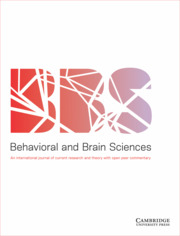Crossref Citations
This article has been cited by the following publications. This list is generated based on data provided by
Crossref.
Gove, Walter R.
and
Malcom, Nancy L.
1997.
Can sociology be a science?: The issue of gender and sex-dimorphic characteristics.
The American Sociologist,
Vol. 28,
Issue. 4,
p.
9.
Mueller, Ulrich
and
Mazur, Allan
1998.
Reproductive Constraints on Dominance Competition in Male Homo Sapiens.
Evolution and Human Behavior,
Vol. 19,
Issue. 6,
p.
387.
van Honk, Jack
Tuiten, Adriaan
Verbaten, Rien
van den Hout, Marcel
Koppeschaar, Hans
Thijssen, Jos
and
de Haan, Edward
1999.
Correlations among Salivary Testosterone, Mood, and Selective Attention to Threat in Humans.
Hormones and Behavior,
Vol. 36,
Issue. 1,
p.
17.
Schultheiss, Oliver C.
Campbell, Kenneth L.
and
McClelland, David C.
1999.
Implicit Power Motivation Moderates Men's Testosterone Responses to Imagined and Real Dominance Success.
Hormones and Behavior,
Vol. 36,
Issue. 3,
p.
234.
Budaev, Sergey V
1999.
Sex differences in the Big Five personality factors: Testing an evolutionary hypothesis.
Personality and Individual Differences,
Vol. 26,
Issue. 5,
p.
801.
LUNDBERG, ULF
1999.
Stress Responses in Low‐Status Jobs and Their Relationship to Health Risks: Musculoskeletal Disorders.
Annals of the New York Academy of Sciences,
Vol. 896,
Issue. 1,
p.
162.
Thornhill, Randy
and
Gangestad, Steven W.
1999.
Facial attractiveness.
Trends in Cognitive Sciences,
Vol. 3,
Issue. 12,
p.
452.
Mcgraw, K.J.
and
Hill, G.E.
1999.
Induced homosexual behaviour in male house finches (Carpodacus mexicanus): the “Prisoner Effect”.
Ethology Ecology & Evolution,
Vol. 11,
Issue. 2,
p.
197.
Suay, F
Salvador, A
González-Bono, E
Sanchı́s, C
Martı́nez, M
Martı́nez-Sanchis, S
Simón, V.M
and
Montoro, J.B
1999.
Effects of competition and its outcome on serum testosterone, cortisol and prolactin.
Psychoneuroendocrinology,
Vol. 24,
Issue. 5,
p.
551.
van Honk, Jack
Tuiten, Adriaan
van den Hout, Marcel
Koppeschaar, Hans
Thijssen, Jos
de Haan, Edward
and
Verbaten, Rien
2000.
Conscious and preconscious selective attention to social threat: different neuroendocrine response patterns.
Psychoneuroendocrinology,
Vol. 25,
Issue. 6,
p.
577.
Walsh, Anthony
2000.
Evolutionary psychology and the origins of justice.
Justice Quarterly,
Vol. 17,
Issue. 4,
p.
841.
WALSH, ANTHONY
2000.
BEHAVIOR GENETICS AND ANOMIE/STRAIN THEORY.
Criminology,
Vol. 38,
Issue. 4,
p.
1075.
2000.
Sex Differences.
p.
379.
Penton-Voak, I.S
and
Perrett, D.I
2000.
Female preference for male faces changes cyclically.
Evolution and Human Behavior,
Vol. 21,
Issue. 1,
p.
39.
Bugental, Daphne Blunt
2000.
Acquisition of the algorithms of social life: A domain-based approach..
Psychological Bulletin,
Vol. 126,
Issue. 2,
p.
187.
Kopp, Maria S
Skrabski, Árpád
and
Szedmák, Sándor
2000.
Psychosocial risk factors, inequality and self-rated morbidity in a changing society.
Social Science & Medicine,
Vol. 51,
Issue. 9,
p.
1351.
Hemelrijk, Charlotte K.
2000.
Towards the integration of social dominance and spatial structure.
Animal Behaviour,
Vol. 59,
Issue. 5,
p.
1035.
Booth, Alan
Carver, Karen
and
Granger, Douglas A.
2000.
Biosocial Perspectives on the Family.
Journal of Marriage and Family,
Vol. 62,
Issue. 4,
p.
1018.
Ratner, Carl
2000.
A Cultural-Psychological Analysis of Emotions.
Culture & Psychology,
Vol. 6,
Issue. 1,
p.
5.
Wood, Wendy
and
Eagly, Alice H.
2000.
Once again, the origins of sex differences..
American Psychologist,
Vol. 55,
Issue. 9,
p.
1062.

